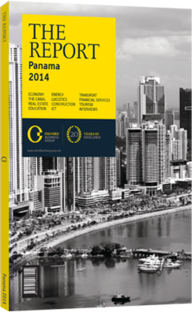OBG talks to Frank De Lima, Minister of Economy and Finance

Interview: Frank De Lima
Which sectors are best placed to capitalise on the expansion of the Panama Canal?
FRANK DE LIMA: The canal has been under Panamanian control for 13 years now, and while it has already transformed the country’s economy, we are still learning how to fully leverage this asset to drive wider growth and diversification. We are expanding the canal and opening two new port concessions – one on the Pacific and another on the Atlantic. There are opportunities for port operations, shipyards and associated maritime services. The logistics sector is well placed to capitalise, leveraging the free zones to add value, in addition to some light value-added manufacturing and assembly. I expect an increase in this kind of activity over the next 10 years. In terms of direct revenues the canal brings to the government, we believe that by 2025 it will be generating $4bn per year, which will play a part in allowing continued public investment.
What is being done to address the inflationary risks of operating at near full employment?
DE LIMA: We are a dollarised economy and therefore subject to the monetary policy of the US, which impacts inflation in Panama. We do have wage demand driving increases in labour costs. However, inflation declined from 5.9% in 2011 to 5.7% in 2012, and we expect it to be below 5% in 2013. We have implemented social programmes to help those affected by price increases. We also subsidise certain energy costs. These are programmes with a very specific scope so that they target only those who really need them.
Panama achieved an investment-grade rating on its debt. What was the impact of this?
DE LIMA: It has been very positive, not only in terms of borrowing costs but also in the way it affects the perception of our economy. It has lowered borrowing costs not only for the government but for the private sector, such as banks, due to the way the agencies link corporate risk assessment with that of the state. Our average borrowing costs have dropped from 7% to 5.4%. Our recent 40-year bond issue was the longest issue bond that Panama has offered, at a cost of 4.3%. Considering the average inflation rate over the past five years has been 5.2%, all the public investment we have made makes a lot of sense. It would cost more to make the investments in future.
Is the public spending programme sustainable?
DE LIMA: We have been investing close to 9% of GDP over the past three years. Most Latin American countries are investing 2-3%. The money goes on productive projects – roads, the metro, hospitals – which increase the country’s structural capacity for growth in the medium and long term. The previous administration invested $4.4bn in a five-year period. This administration will have invested $14bn by the end of its term – excluding the Panama Canal expansion.
From the analysis we undertook when creating the Panama Savings Fund (Fondo Ahorro Panama, FAP), the next administration will have the capacity to invest up to $19bn. This is sustainable growth in public investment. We made reasonable assumptions concerning economic growth, with expectations of continued growth of 5-6% in addition to higher canal revenues.
These figures were produced together with the IMF when we were working on the FAP.
How are you planning to steer the economy towards higher value-added services?
DE LIMA: Free and processing zones, which offer a variety of fiscal and tax incentives, are central to the drive. The Colón Free Zone is very important, as it operates as a commercial free zone, where such value addition can be combined with import-export operations. Key pieces of infrastructure will act as enablers, and we plan to invest in a road linking Panama Pacifico to the Centennial Bridge, which would give access to all the land on the western bank of the canal. This is an obvious location for such operations.
You have reached the limit of premium articles you can view for free.
Choose from the options below to purchase print or digital editions of our Reports. You can also purchase a website subscription giving you unlimited access to all of our Reports online for 12 months.
If you have already purchased this Report or have a website subscription, please login to continue.

